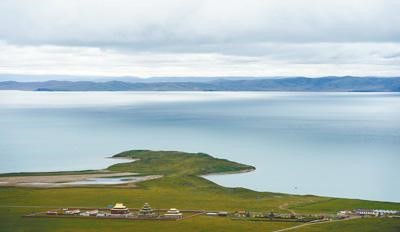
A lake near Maduo, a key area at Sanjiangyuan National Park. Photo: People's Daily
Sanjiangyuan National Park, which includes the Ho Xil area, recently celebrated her second birthday as the country’s first national park.
Successful efforts in anti-poaching, water-soil conservation, and mining bans, make it impossible to forget how China’s environmental protection efforts have spread nationwide.
“It should be noted that Sanjiangyuan National Park was established with a clear aim that it was not a tourism-oriented park, and the primary function is to implement full protection to its ecosystem,” said Sanjiangyuna National Park Director, Li Xiaonan.
China has the third largest land area in the world, yet it's is a newcomer when it comes to building national parks and managing administrative systems to keep it running. In December 2015, China decided to establish its first national park on a trial basis, and that was when this miracle began.
Nature's revenge
Maduo, water head of the Yellow River, stands the tallest of any county in Qinghai Province, with an average altitude of 4500m. In the 1980s, with the natural gift of beautiful green grass and abundant rainfall, the country experienced a surge in livestock, and with less than 10,000 residents, it was able to care for 750,000 cows and sheep.
However, immoderate pastures have imperiled the environment. By the 1990s, 70 percent of its pasture was ruined, and the desertification rate increased 2.6 percent yearly.
Following the low rainfall, the number of lakes dropped to 1,800 from 4,077. What alarmed the locals most was when the county’s well went dry, and they had to carry blocks of ice from a river several kilometers away.
Fortunately, efforts have been made since 2003 in the form of multi-billion yuan investments poured into ecological-environmental protection, such as calling off GDP assessment to the counties in the park’s core areas, desertification management, herding and mining bans, and ecosystem restoration.
Wild animal paradise
Protected for generations, many species that had all but disappeared in Sanjiangyuan and Hoh Xil can be seen again. Tibetan antelopes have long been prized hunting trophies, but with the fight against criminal poaching, the population has grown.
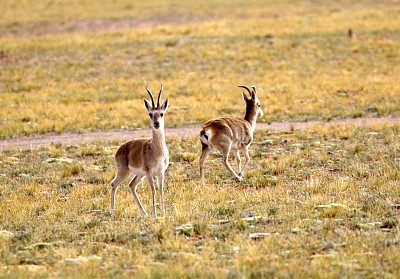
Tibetan antelope in Hoh Xil. Photo: VCG
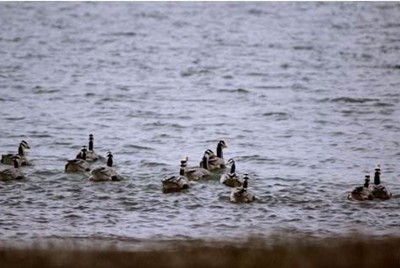
In the winter, flocks of bar-headed geese migrate to Elinghu Lake in Maduo County
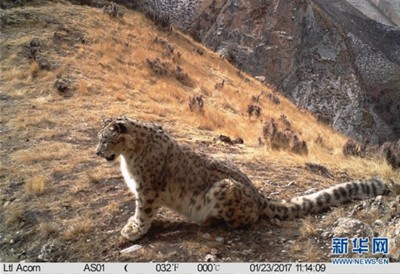
Snow leopard spotted by an infrared camera. Photo : Xinhua
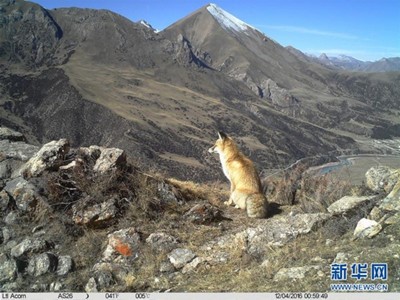
A red fox photographed by an infrared camera. Photo : Xinhua
Shepherds become rangers
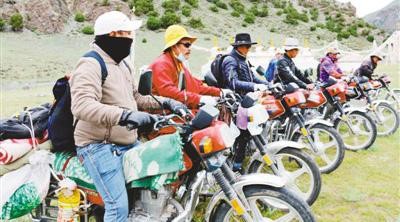
Eco-environment rangers prepare to patrol the area. Photo: People's Daily
In efforts to stimulate motivation from local herdsman in eco-environment protection, The park gives them jobs as “eco-environment rangers,” complete with a monthly salary. Today, some 10,051 eco-rangers patrol the park, with roughly half of whom come from impoverished backgrounds.
Xiangba Qiupei, a middle-aged man, has a new identity: eco-environment ranger of Sanjiangyuan National Park. He often packs dried food into a shabby bag and hops on his chestnut-colored horse riding for days to the remotest areas of the grassland to pick up trash.
“To be honest, when I started this line of work, I didn’t even know what it was,” said Xiangba, “but the park invited instructors to train us and dispel our doubts in both Mandarin and Tibetan. From then on, I knew that eco-environment rangers are the guardians of the grasslands, we herdsmen are rooted in grasslands. and we will benefit from them as long as they are protected.”
Efficient administration
Before the new general administrative department of Sanjiangyuan National Park was established, administrative authority was dispersed between the departments of Forestry, Land Resources, Environment Protection, Water Conservancy among others, and fractions and mutual restraint between departments frequently arose.
Law enforcement authority is now streamlined into one administrative department, and has significantly improved administrative efficiency.
“We used to work like ten separate fingers, but now we are like a fist,” said He Haiyan, secretary of the Administrative Committee for Yellow River headwater area.
Sanjiangyuan’s success has sent a message to the world that China has the determination and ability to take on eco-environmental protection.
Further Reading:
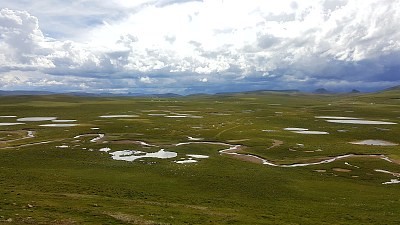
Sanjiangyuan National Park. Photo: VCG
Sanjiangyuan, located in along the Qinghai-Tibet plateau in Northwest China, is the headwater area of Yellow River, Yangtze River and Lancang River, three of the country’s major rivers. This stretch of beautiful land is known for its diversity of species, mangroves and plateau landscapes.
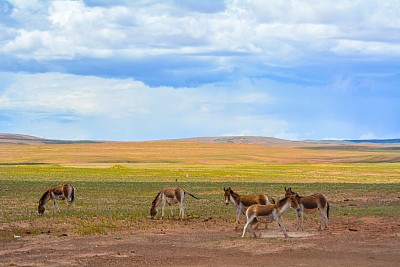
Kiangs in Hoh Xil. Photo: VCG
Hoh Xil, located in Qinghai Province, is a UNESCO world heritage site. The area is home to more than 200 wildlife species including the Tibetan antelope, which make up nearly 40 percent of the species worldwide.
Hoh Xil has preserved the complete migratory route of the
Tibetan antelope, an endangered mammal that is endemic to the plateau.


